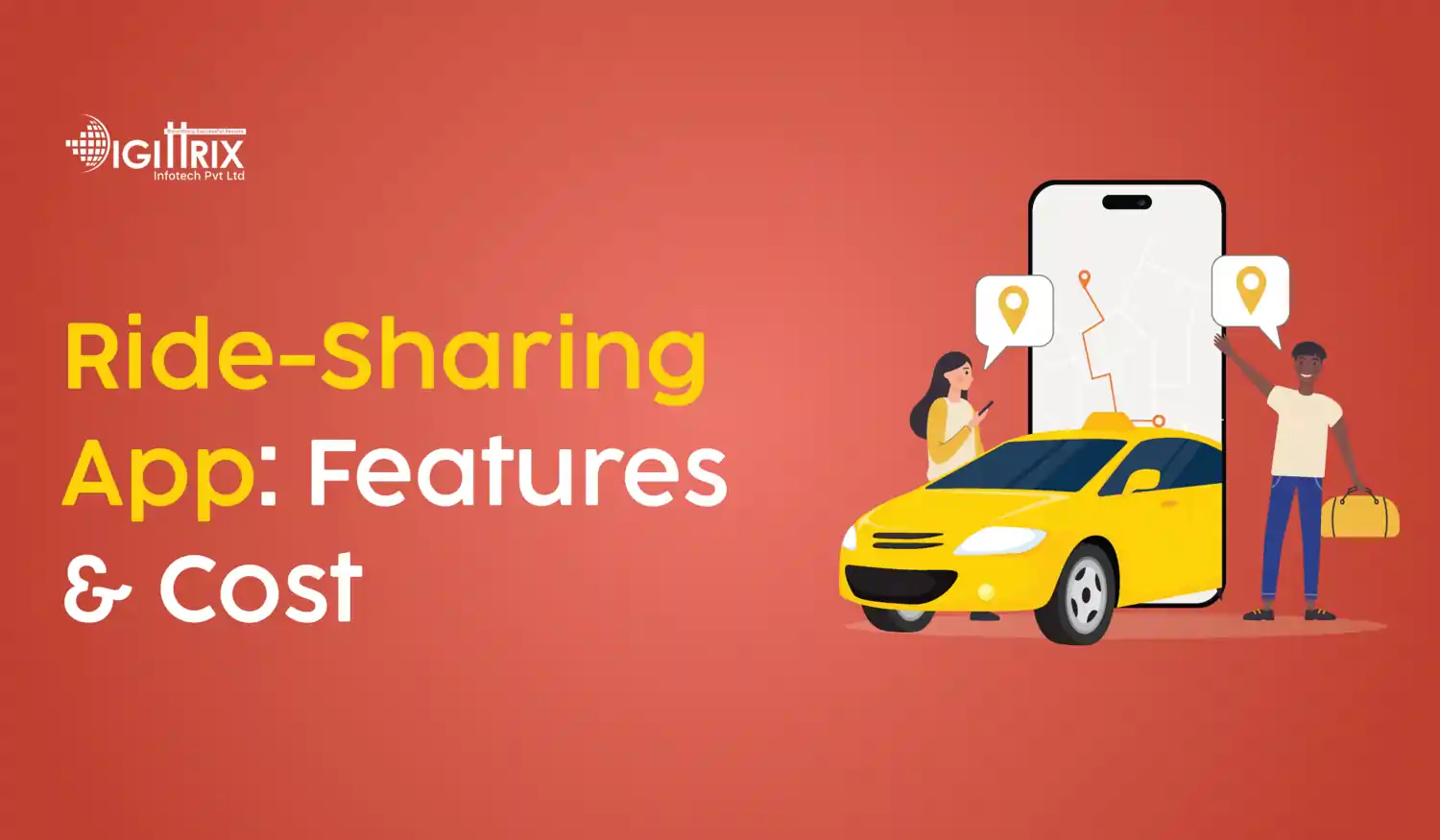Developing a Ride-Sharing App: Challenges and Solutions
Understanding the Ride-Sharing Industry
The ride-sharing industry has changed how people commute. A well-built ride-sharing app can offer users convenience while ensuring smooth operations for drivers. However, creating a successful app comes with its own challenges.
Key Challenges in Ride-Sharing App Development
1. Ensuring User Safety
User safety is a top concern in ride-sharing app development. Background checks for drivers, real-time tracking, and emergency response features are necessary to build trust among users.
2. Managing Real-Time Bookings
A ride-sharing app must process thousands of booking requests in real-time. Ensuring that rides are assigned correctly without delays requires a strong backend system and efficient algorithms.
3. Handling Surge Pricing Fairly
Surge pricing helps balance supply and demand, but it can also lead to dissatisfaction among users. A transparent pricing model and fair surge pricing rules can help maintain user confidence.
4. Developing a User-Friendly Interface
A ride-sharing app must be simple to use for both riders and drivers. Complicated navigation or unclear features may lead to frustration. Intuitive design and easy-to-follow instructions can improve user experience.
5. Competing with Established Platforms
Big names in the industry make competition tough for new ride-sharing apps. To stand out, a new app must provide unique features, better pricing, or superior service quality.
Practical Solutions for Ride-Sharing App Development
1. Implementing Strong Safety Measures
Adding features like in-app emergency buttons, driver verification, and two-way ratings can improve safety. Identity verification through government IDs and AI-powered face recognition can add an extra layer of security.
2. Using Advanced Algorithms for Smart Matching
A well-structured ride-matching system ensures drivers are assigned efficiently, reducing wait times. Machine learning can help predict demand and optimize routes for better service.
3. Creating a Transparent Pricing System
Clear fare breakdowns and fair surge pricing policies help avoid misunderstandings. Offering fare estimates before booking can keep users informed and prevent complaints.
4. Focusing on a Smooth User Experience
A visually appealing interface with easy-to-use booking options makes a ride-sharing app more accessible. Features like ride history, multiple payment options, and quick support also improve usability.
5. Offering Competitive Benefits
Providing better driver incentives, improved ride quality, or added perks like in-app chat support can attract both drivers and passengers. Unique features such as eco-friendly ride options or subscription models can also help build a strong customer base.
Final words
Developing a ride-sharing app requires careful planning to overcome industry challenges. By prioritizing safety, efficiency, fair pricing, and user experience, a ride-sharing app can offer great service while competing with established platforms. With the right approach, a rideshare app development project can succeed in this competitive market.
For more details visit-https://www.digittrix.com/blogs/how-to-build-a-ride-sharing-app-features-and-cost-estimation
Understanding the Ride-Sharing Industry
The ride-sharing industry has changed how people commute. A well-built ride-sharing app can offer users convenience while ensuring smooth operations for drivers. However, creating a successful app comes with its own challenges.
Key Challenges in Ride-Sharing App Development
1. Ensuring User Safety
User safety is a top concern in ride-sharing app development. Background checks for drivers, real-time tracking, and emergency response features are necessary to build trust among users.
2. Managing Real-Time Bookings
A ride-sharing app must process thousands of booking requests in real-time. Ensuring that rides are assigned correctly without delays requires a strong backend system and efficient algorithms.
3. Handling Surge Pricing Fairly
Surge pricing helps balance supply and demand, but it can also lead to dissatisfaction among users. A transparent pricing model and fair surge pricing rules can help maintain user confidence.
4. Developing a User-Friendly Interface
A ride-sharing app must be simple to use for both riders and drivers. Complicated navigation or unclear features may lead to frustration. Intuitive design and easy-to-follow instructions can improve user experience.
5. Competing with Established Platforms
Big names in the industry make competition tough for new ride-sharing apps. To stand out, a new app must provide unique features, better pricing, or superior service quality.
Practical Solutions for Ride-Sharing App Development
1. Implementing Strong Safety Measures
Adding features like in-app emergency buttons, driver verification, and two-way ratings can improve safety. Identity verification through government IDs and AI-powered face recognition can add an extra layer of security.
2. Using Advanced Algorithms for Smart Matching
A well-structured ride-matching system ensures drivers are assigned efficiently, reducing wait times. Machine learning can help predict demand and optimize routes for better service.
3. Creating a Transparent Pricing System
Clear fare breakdowns and fair surge pricing policies help avoid misunderstandings. Offering fare estimates before booking can keep users informed and prevent complaints.
4. Focusing on a Smooth User Experience
A visually appealing interface with easy-to-use booking options makes a ride-sharing app more accessible. Features like ride history, multiple payment options, and quick support also improve usability.
5. Offering Competitive Benefits
Providing better driver incentives, improved ride quality, or added perks like in-app chat support can attract both drivers and passengers. Unique features such as eco-friendly ride options or subscription models can also help build a strong customer base.
Final words
Developing a ride-sharing app requires careful planning to overcome industry challenges. By prioritizing safety, efficiency, fair pricing, and user experience, a ride-sharing app can offer great service while competing with established platforms. With the right approach, a rideshare app development project can succeed in this competitive market.
For more details visit-https://www.digittrix.com/blogs/how-to-build-a-ride-sharing-app-features-and-cost-estimation
Developing a Ride-Sharing App: Challenges and Solutions
Understanding the Ride-Sharing Industry
The ride-sharing industry has changed how people commute. A well-built ride-sharing app can offer users convenience while ensuring smooth operations for drivers. However, creating a successful app comes with its own challenges.
Key Challenges in Ride-Sharing App Development
1. Ensuring User Safety
User safety is a top concern in ride-sharing app development. Background checks for drivers, real-time tracking, and emergency response features are necessary to build trust among users.
2. Managing Real-Time Bookings
A ride-sharing app must process thousands of booking requests in real-time. Ensuring that rides are assigned correctly without delays requires a strong backend system and efficient algorithms.
3. Handling Surge Pricing Fairly
Surge pricing helps balance supply and demand, but it can also lead to dissatisfaction among users. A transparent pricing model and fair surge pricing rules can help maintain user confidence.
4. Developing a User-Friendly Interface
A ride-sharing app must be simple to use for both riders and drivers. Complicated navigation or unclear features may lead to frustration. Intuitive design and easy-to-follow instructions can improve user experience.
5. Competing with Established Platforms
Big names in the industry make competition tough for new ride-sharing apps. To stand out, a new app must provide unique features, better pricing, or superior service quality.
Practical Solutions for Ride-Sharing App Development
1. Implementing Strong Safety Measures
Adding features like in-app emergency buttons, driver verification, and two-way ratings can improve safety. Identity verification through government IDs and AI-powered face recognition can add an extra layer of security.
2. Using Advanced Algorithms for Smart Matching
A well-structured ride-matching system ensures drivers are assigned efficiently, reducing wait times. Machine learning can help predict demand and optimize routes for better service.
3. Creating a Transparent Pricing System
Clear fare breakdowns and fair surge pricing policies help avoid misunderstandings. Offering fare estimates before booking can keep users informed and prevent complaints.
4. Focusing on a Smooth User Experience
A visually appealing interface with easy-to-use booking options makes a ride-sharing app more accessible. Features like ride history, multiple payment options, and quick support also improve usability.
5. Offering Competitive Benefits
Providing better driver incentives, improved ride quality, or added perks like in-app chat support can attract both drivers and passengers. Unique features such as eco-friendly ride options or subscription models can also help build a strong customer base.
Final words
Developing a ride-sharing app requires careful planning to overcome industry challenges. By prioritizing safety, efficiency, fair pricing, and user experience, a ride-sharing app can offer great service while competing with established platforms. With the right approach, a rideshare app development project can succeed in this competitive market.
For more details visit-https://www.digittrix.com/blogs/how-to-build-a-ride-sharing-app-features-and-cost-estimation
0 التعليقات
0 المشاركات
72 مشاهدة
0 معاينة











